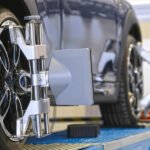

Unlocking the Potential of Ethanol-Powered Cars
Introduction to Ethanol-Powered Cars
Ethanol-powered cars, also known as flex-fuel vehicles (FFVs), utilize ethanol, a renewable fuel source derived from plant materials such as corn, sugarcane, or switchgrass, as their primary energy source. These vehicles are designed to run on blends of ethanol and gasoline, with varying proportions. For instance, E85, a common ethanol blend, consists of 85% ethanol and 15% gasoline. The use of ethanol in vehicles offers an alternative to traditional gasoline-powered engines, providing both environmental and economic benefits. One notable example is the popular Ford Flex Fuel vehicles, which have been on the market for years, showcasing the viability of ethanol as a fuel option.
History and Evolution of Ethanol-Powered Cars
Ethanol-powered cars aren’t some new fad. Believe it or not, the concept dates way back to the birth of automobiles! Henry Ford’s iconic Model T, rolling off the assembly line in the early 1900s, was actually designed to run on ethanol. This shows how early on folks saw the potential of this plant-based fuel.
So, what happened? Why didn’t everyone start filling up with corn juice? Gasoline took the fast lane for a while, pushing ethanol to the sidelines for decades. But with climate change and energy worries growing louder, ethanol cars are making a comeback. These rides act like a bridge between renewable energy and our need to get around, offering a cleaner alternative to the fossil fuels of the past.
Mechanics of Ethanol-Powered Cars
The mechanics of ethanol-powered cars are similar to those of traditional gasoline vehicles, with modifications to accommodate ethanol fuel blends. Flex-fuel vehicles feature specially designed engines and fuel systems capable of adjusting to varying ethanol-gasoline ratios. These engines incorporate sensors and computerized systems to optimize performance based on the fuel mixture used. Additionally, ethanol has a higher octane rating compared to gasoline, resulting in improved engine efficiency and performance. Ethanol-powered cars typically achieve similar mileage to their gasoline counterparts, with some variations depending on the blend used and driving conditions.
Advantages of Ethanol-Powered Cars
Ethanol-powered cars offer numerous advantages for both owners and the environment. From a consumer perspective, ethanol is often cheaper than gasoline, providing cost savings at the pump. Additionally, ethanol is a domestically produced fuel, reducing dependence on imported oil and enhancing energy security. Environmentally, ethanol produces fewer greenhouse gas emissions compared to gasoline, contributing to cleaner air and mitigating climate change. Moreover, the cultivation of ethanol feedstocks promotes sustainable agriculture practices and rural economic development, further enhancing its environmental and societal benefits.
Trade-Offs and Downsides
Despite their benefits, ethanol-powered cars also present certain trade-offs and downsides. One notable concern is the potential for reduced fuel efficiency when using ethanol blends, which can result in higher fuel consumption and shorter driving ranges compared to pure gasoline. Additionally, the production of ethanol feedstocks may compete with food crops for land and resources, raising concerns about food security and land use sustainability. Furthermore, ethanol production processes can vary in their environmental impact, with some methods consuming significant amounts of water and energy.
Concluding Remarks on the Practicality of Ethanol-Powered Cars
In conclusion, ethanol-powered cars represent a promising solution to the challenges of traditional gasoline vehicles. With their renewable fuel source, environmental benefits, and potential for cost savings, these vehicles offer a compelling alternative for environmentally conscious consumers and policymakers alike. While they may not be without their trade-offs, the continued innovation and investment in ethanol technology hold promise for a more sustainable and resilient transportation future. As we strive towards a greener and more energy-efficient society, ethanol-powered cars stand as a testament to the power of innovation in addressing pressing environmental and economic concerns.
Add a comment Cancel reply
Categories
- Car Gadgets (17)
- Car News (33)
- Car Reviews (43)
- Car Wars (7)
- Mechanicals (32)
- Uncategorized (2)
Recent Posts
About us

Popular Tags
Related posts


Essential Car Repair Skills Every Driver Should Know

All About Wheel Balancing








